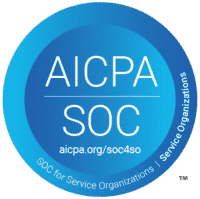‘De Staat van het Onderwijs‘ provides an annual picture of the state of education in the Netherlands. The 2022 report lists as one of the social tasks of education: ‘Every pupil and student succeeds in further education and on the labor market.’ An important task to which student-owned learning, with the help of a portfolio can contribute. But how do you integrate working with a portfolio into an existing learning vision or methodology? In this article we challenge you with 5 questions to investigate this within your educational institution.
A student-owned portfolio strategy
A student-owned portfolio encourages students to take ownership of their own learning. The portfolio strategy is how you use the portfolio in education. It is important here that the portfolio has a clear didactic function and is part of education. As a stand-alone form of work, it misses its purpose (for the most part). What the portfolio strategy looks like depends on the learning vision or methodology of the educational institution.
Methodologies: from traditional to student-owned and everything in between
There are different methodologies in learning. At one end of the spectrum you’ll find traditional learning, which is primarily teacher-driven. At the other end, you’ll find “open learning,” which is completely student-owned (Hoogeveen & Winkels, 2018).
It goes without saying that a student-owned portfolio can be well integrated into a methodology where student-owned learning plays a major role. Examples of such methodologies are:
- Competency based learning
- Problem-based learning
- Challenge-based learning
- Reflective learning
With previous methodologies, the use of a student-owned portfolio is almost indispensable. You can choose to switch to one of these methods, but that is not necessary. There are also opportunities to use a portfolio within ‘traditional’ methodologies. The deployment and didactic function of the portfolio will simply look different.
Five questions to start your investigation
It does not fit in this article to explain every situation and bring in the right nuance. That is why below you will find 5 questions to explore within your educational institution what portfolio strategy will suit you.
- Why do you want a student-owned portfolio?
- What do you need to make this a reality?
- What are potential obstacles and how will you deal with them?
- Where can you start small?
- How can you expand it?
Question 1. Why do you want a student-owned portfolio?
This question revolves around an analysis of the current methodology and your expectations of using a portfolio. The following questions may help you:
- What methodology do you currently use and are you satisfied with it?
- Where and why do you want to add to it or change it?
- To what extent do you have room to change?
- Why do you want to use a portfolio?
- What didactic function do you want to give the portfolio?
The curricular spider web of van den Akker (2003) is a useful tool to structure these questions. The different components of a curriculum are shown in the core and the nine threads of the spider web. In addition, you can see the different levels at which curriculum agreements are established.
By looking at each component and level, you analyze in a structured way where you want to make gains. In doing so, set concrete goals. These goals not only form the basis for determining exactly what you need, but will also help you evaluate and determine next steps. Include in this analysis how you expect a portfolio to help you achieve those goals.
Question 2. What do you need to make it happen?
Now that you know why you want a portfolio, you can determine what you need (orientation) and which product fits(design). It is tempting to reason from the perspective of the product, the portfolio software. In that situation, however, you adapt your teaching to the product. Whereas to properly integrate a portfolio, it is actually important to keep thinking from the education and keep the main goal in mind (Scully et al., 2018).
One way to do that is to create a learning journey. In it, you incorporate what the student’s “journey” looks like. When do you want to use a portfolio? What learning goals do you want to address? What do you want students to develop by working with a portfolio? What does assessment look like? And what happens to the portfolios when it is “finished”? The answers to these kinds of questions form the basis for the requirements you set for the portfolio.
Kennisnet has developed a Dutch toolkit: ‘Verkenning digitaal portfolio’. This toolkit is structured in a way that through several steps you can start orienting on a digital portfolio. Although this toolkit originates from primary education, it touches on many components that are also relevant to higher education. The methodology behind it comes from a service design process. In this process, you map out the learning journey and explore how to support it meaningfully with digital resources.
Question 3. What are potential obstacles and how will you deal with them?
Whatever portfolio strategy you choose, it involves change. And where there are changes, you will find obstacles. Prepare for these obstacles by identifying them and possibly already addressing them. At Portflow, we are involved daily in implementing our portfolio. From this experience and from the scientific literature, we list some possible obstacles or pitfalls:
There is not enough time and space to deal with change
Change takes time. In the beginning, a teacher’s time investment will be higher than the time gain you actually aim to achieve. Although this is temporary, extra time and space must be there to start with.
Thinking from current teaching habits
People are creatures of habit; that’s what makes them efficient. Yet change requires scrutinizing all habits and measuring them against the goal you want to achieve. This means that current teaching habits must be viewed in the context of the new vision, goals, ambitions and changing context.
Teachers and/or students are not (sufficiently) involved
Involving teachers and students in the entire change process not only makes it clear to them what the learning outcome is, but also that their input and experiences are valuable. Motivation greatly influences their commitment and thus the success of a portfolio strategy (Beckers et al., 2016).
There is not enough support
Working with a portfolio requires different skills. Therefore, good support for all involved is indispensable. When that support is not properly in place, it hinders the success of the portfolio (Zhang, 2022).
The portfolio is not (properly) integrated into education
By designing a learning journey from the perspective of education, you can avoid a situation where although there is a wonderful portfolio, it is hardly used because it is disconnected from daily teaching (Beckers et al., 2016).
Architecture of education systems does not fit well
Here the integration, positioning and role of different educational processes in the different systems plays a role. Next to that, interoperability and integration between them is also important. At Portflow, we always keep these aspects in mind.
Question 4. Where can you start small?
Integrating a portfolio strategy into an educational institution is a sizeable project. That is why it is important to start small. A pilot will give you a good idea of what the (technical and practical) consequences will be and whether the ICT infrastructure is prepared for this. Moreover, it helps to concretize the way of working, making it visible which skills are required of a teacher. A pilot can also be used to generate support by creating ‘ambassadors’ of the portfolio.
Where are the possibilities within your educational institute to set up a pilot? Is there a study that wants to explore this way of working? Are there teachers who already work (partly) with a portfolio or who would like to? Are there subjects that are ideally suited for this or that need a ‘refresher’? Find the place where there is space, time and energy to start small. It also helps to look for several places within your institution. This way you can gain and exchange experiences from different training contexts.
Question 5. How can you expand it?
The pilot provides all kinds of valuable information about preconditions, skills, time and space. From the pilot, it can be made clear to management what is needed to build on the portfolio strategy. Do not underestimate this phase and take your time to create and execute a good implementation plan.
Tips and tricks
With Portflow, we help educational institutions with a student-owned portfolio. From this experience, we offer 10 tips.
 |
Do not focus on the end product (the type of portfolio), but rather on what you want to achieve with it. |
 |
Work out in what ways (scaffolding) you can help the student, appropriate to his needs and context, to take more responsibility and ownership. |
 |
Continually examine “old” educational practices and remain critical. How do they fit with the renewed vision, ambitions, goals and the changing context? |
 |
Work evidence-informed. More and more research is being done on student-centered learning with a portfolio and how to integrate this within different methodologies. Look for the knowledge that already exists and translate it to your own practice. This we can help you with. |
 |
Use knowledge from direct colleagues or other educational institutions, shared experiences are a great help. For example, through the user group Portflow Labs. |
 |
Describe your own experiences. Besides picking up experiences from others, it is also valuable to share your ideas and practice with others and learn from the reactions of others. |
 |
Involve students. Form a focus group or working group of students to help think about the innovation and its deployment. |
 |
Gather ambassadors who are not only good example users, but also willing to share their honest experiences. Make these experiences easily accessible. |
 |
Ask students who have a great showcase or example of a development portfolio whether you may share it (anonymized) more widely within or outside the institution. |
 |
Be bold, find like-minded people and push forward. Often there is more space for change than you realize. |
Sources
Akker, J. van den (2003). Curriculum perspectives: An introduction. In J. van den Akker, W. Kuiper & U. Hameyer (Eds.), Curriculum landscapes and trends (pp. 1-10). Dordrecht, Kluwer.
Beckers, J., Dolmans, D., & Van Merriënboer, J. (2016). E-portfolios enhancing students’ self-directed learning: A systematic review of influencing factors. Australasian Journal of Educational Technology. https://doi.org/10.14742/ajet.2528
Harun, R. N., Hanif, M. H., & Goh, P. S. C. (2021). The Pedagogical Affordances of eportfolio in Learning How to Teach: A Systematic Review. Studies in English Language and Education, 8(1), 1–15. https://doi.org/10.24815/siele.v8i1.17876
Hoogeveen, P & Winkels, J. (2018). Het didactische werkvormenboek. Variatie en differentiatie in de praktijk.
Hoskam, L. (2006). Invoeren van een digitaal portfolio in het hoger beroepsonderwijs.
Inspectie van het onderwijs (2022). Rapport De Staat van het Onderwijs 2022. https://www.onderwijsinspectie.nl/documenten/rapporten/2022/04/13/de-staat-van-het-onderwijs-2022
Kennisnet (2018). Toolkit Verkenning digitaal portfolio. https://www.kennisnet.nl/app/uploads/kennisnet/publicatie/Kennisnet-Handleiding-toolkit-digitaal-portfolio.pdf
Scully, D., O’Leary, M., & Brown, M. (2018). The Learning Portfolio in Higher Education: “A Game of Snakes and Ladders”. https://doi.org/10.13140/RG.2.2.18883.71208
Zhang, P. & Tur, G. (2022). Educational e-Portfolio Overview: Aspiring for the Future by Building on the Past.









